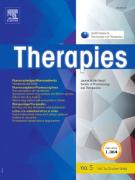Maternal drugs and breastfeeding: Risk assessment from pharmacokinetics to safety evidence - A contribution from the ConcePTION project - 24/03/23
 , Anaëlle Monfort b, c, d, Ema Ferreira c, d, Hedvig Nordeng e, f, Ursula Winterfeld g, Karel Allegaert h, i, j, k, Peggy Gandia l, Monia Guidi m, n, Alice Panchaud a, o
, Anaëlle Monfort b, c, d, Ema Ferreira c, d, Hedvig Nordeng e, f, Ursula Winterfeld g, Karel Allegaert h, i, j, k, Peggy Gandia l, Monia Guidi m, n, Alice Panchaud a, oSummary |
Human milk is the most appropriate form of nutrition for infants while taking medication during the postpartum period is common. Discontinuation of breastfeeding is sometimes wrongly recommended for fear of adverse effects in the breastfed infant whereas only a few drugs are strictly contraindicated while breastfeeding. Most drugs are transferred from the mother's blood to the milk, but the breastfed infant usually ingests a small drug amount through human milk. As population-based evidence is still scarce on safety of drugs during breastfeeding, risk assessment relies on the little clinical evidence available and on pharmacokinetic principles, as well as on specialized sources of information that are essential for clinical decision-making. Risk assessment should not only be based on the drug's potential risk for the breastfed infant but should always take into account the benefits associated to breastfeeding, the risks of untreated maternal disease and the maternal willingness to breastfeed. Identifying situations with potential for drug accumulation in the breastfed infant is decisive while assessing the risk. Health care providers should always assume that mothers will be concerned and use risk communication as a key to ensure medication adherence and prevent unnecessary interruption of breastfeeding. When a mother still expresses concerns, decision support algorithms may facilitate communication and some strategies can be offered to minimize the drug exposure in the breastfed infant even when clinically not justified.
Le texte complet de cet article est disponible en PDF.Keywords : Breastfeeding, Drugs, Pharmacokinetics, Risk assessment, Safety
Plan
Vol 78 - N° 2
P. 149-156 - mars 2023 Retour au numéroBienvenue sur EM-consulte, la référence des professionnels de santé.
L’accès au texte intégral de cet article nécessite un abonnement.
Déjà abonné à cette revue ?

